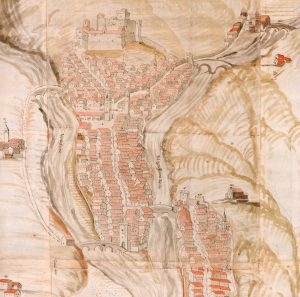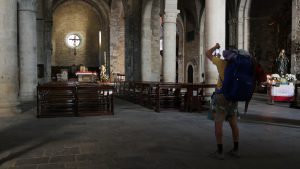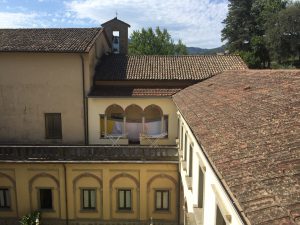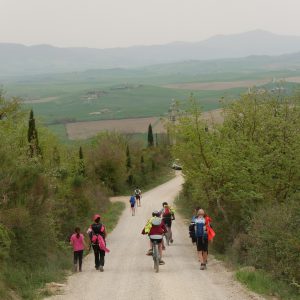
March 26, 2020, by lzzeb
Rethinking my fieldwork at the COVID-19 time
A blog by Leonardo Porcelloni
My research mainly concerns mobility, ancient landscapes and socio-cultural relationships. Fieldwork methods include qualitative face to face interviews as well as archival research. The interviews scheduled for this spring and summer have, of course, had to be cancelled.
We cannot ignore the context of the current situation; in fact, while I recompose the work of data collection now forcibly interrupted, it is evident that it is impossible – at least in this study – to collect the same information with the same quality. Luckily I collected substantial field data last summer and autumn.
The fieldwork is in the northern area of Tuscany, on the Tuscan-Emilian Apennines, and in the southern one, among the Orcia and Paglia valleys and Monte Amiata. I am studing one of the most important pilgrimage road of the Middle Ages: the via Francigena which crosses these two areas. The research not only deals with the history of the route and how it has shaped the landscape, but also with the contemporary phenomenon of pilgrimage. The work has three main approaches:
1) Geo-historical documentation, that is about archival research (Fig.1) and local evidence (Fig.2, The mule track “Via degli Scaleri”, a route of Medieval origin, Apennine (September 2019) see main image.) This element, at first glance, seems to concern only a study and a comparison of “materials”, but also involves the assistance of archive specialists and local experts, who can provide vital local research knowledge.

Fig.1 ASFI “Miscellanea di Piante” n. 375, detail of Pontremoli and the main medieval route, 4th August 1687
2) Ethnographic methods. I have already conducted qualitative interviews with open ended questions with two categories of users of the route. First the local residents (insiders) who act as hosts and providers of facilities to the travellers and second, the travellers (outsiders). With this second group I have explored how they travel (on foot, by bike, etc.) and their motivations (spiritual, pursuit of well-being, sport, etc.).
The interviews, sometimes while sharing a coffee, allowed me to establish good relationships with the respondents who have provided valuable and significant information. One interesting view was that ‘Via Francigena, or the walk in itself, is like a hospital where you go to take care of yourself. Many of them do not travel for pleasure. It’s an itinerary clinic’ (Gabriella, host at Convento dei Cappuccini, September 2019). In addition to this, quantitative questionnaires for pilgrims were developed and delivered to trusted hospitality structures. Questionnaires that, at least for this season, will remain blank! The anti-contagion restrictive rule is addressed to everyone, including the pilgrims.
3) Participant observation. A practice that involves sharing the places where the pilgrimage takes place. This is not only to interact with the interviewees, but also to appreciate and comprehend the experience of the pilgrimage and the inner journey, to be on the side of those who travel, sleep and leave and those who host, those who observe the transit, provide services and earn a living from it. Therefore we share the bedrooms of the churches (Fig. 4), the hostels, the meals, the walk, the nature, the silence, the effort, the landscape.
To pursue the objectives of the research, the material collected, and yet to be collected, will allow me to study the historicity of the medieval path and its modern contextualisation, the connection that the ancient road network has woven with the landscape and the involved heritage. It will allow me to assess experience of the millenary practice of pilgrimage within the landscape of the 21st century. In the meantime, I am analysing the collected data and identifying further methods through online networks.
No comments yet, fill out a comment to be the first




Leave a Reply